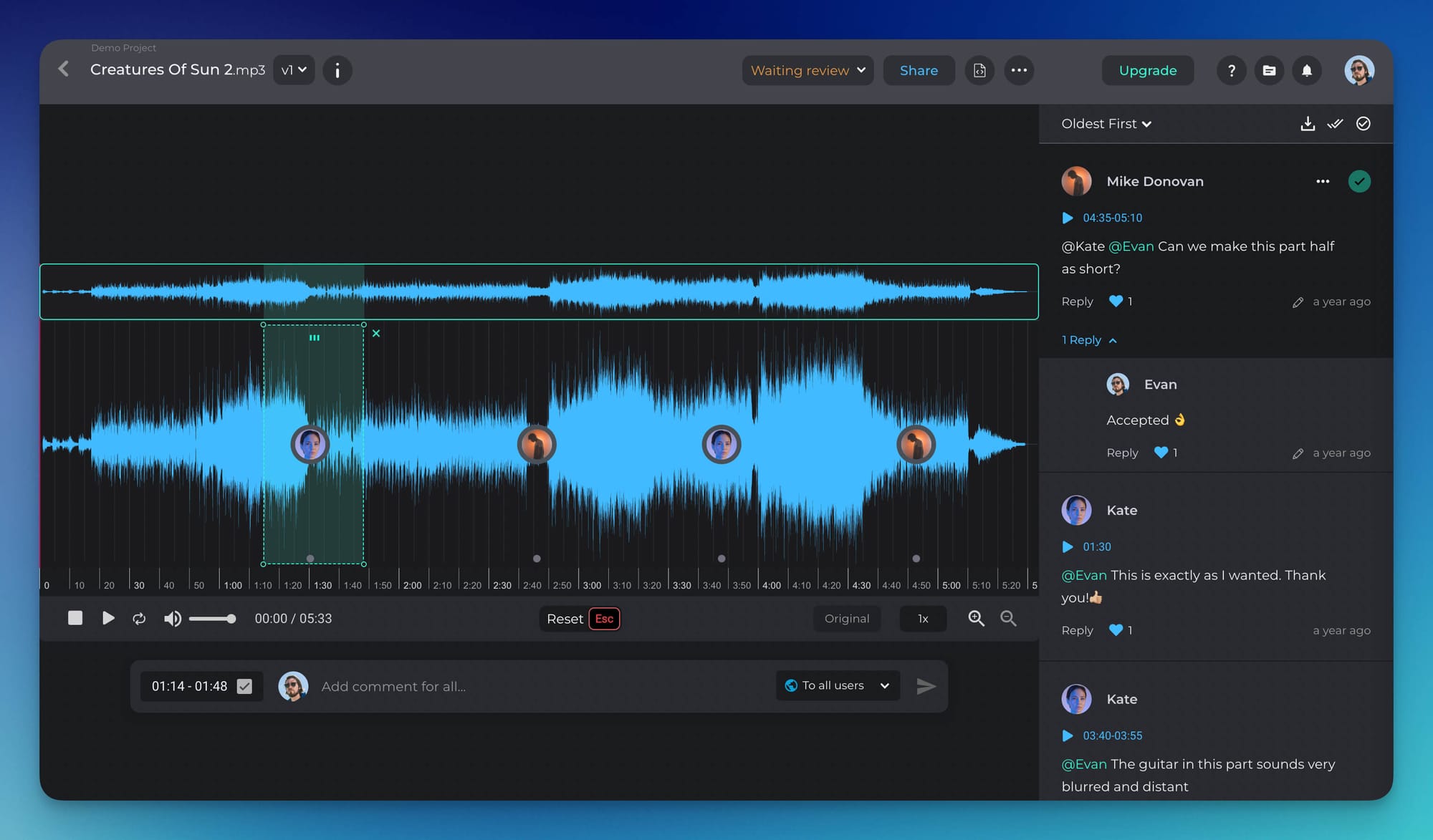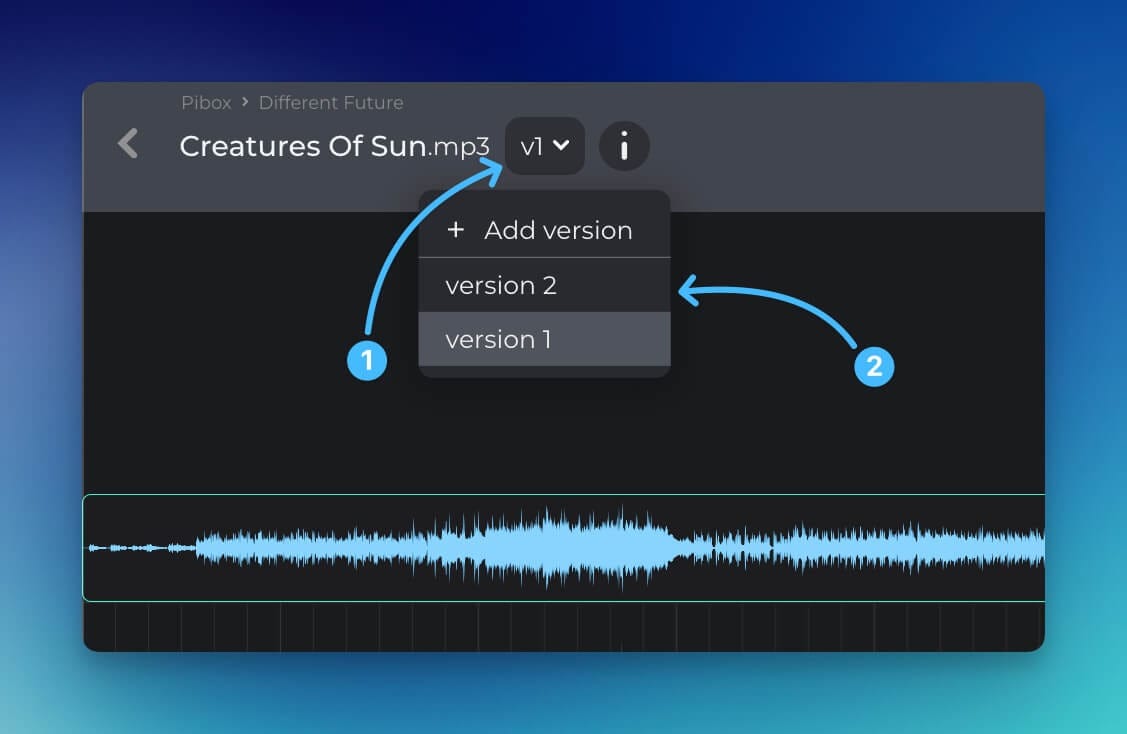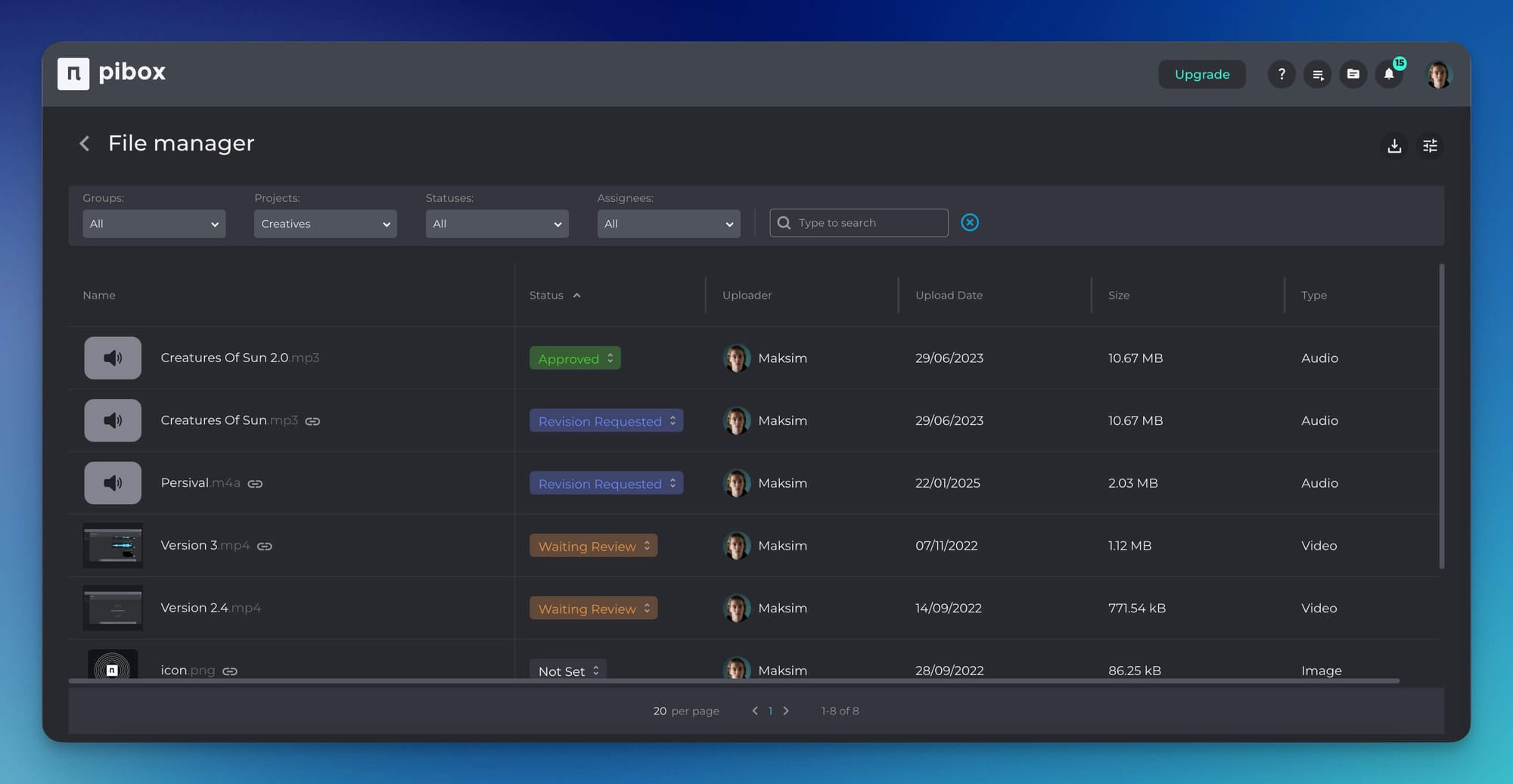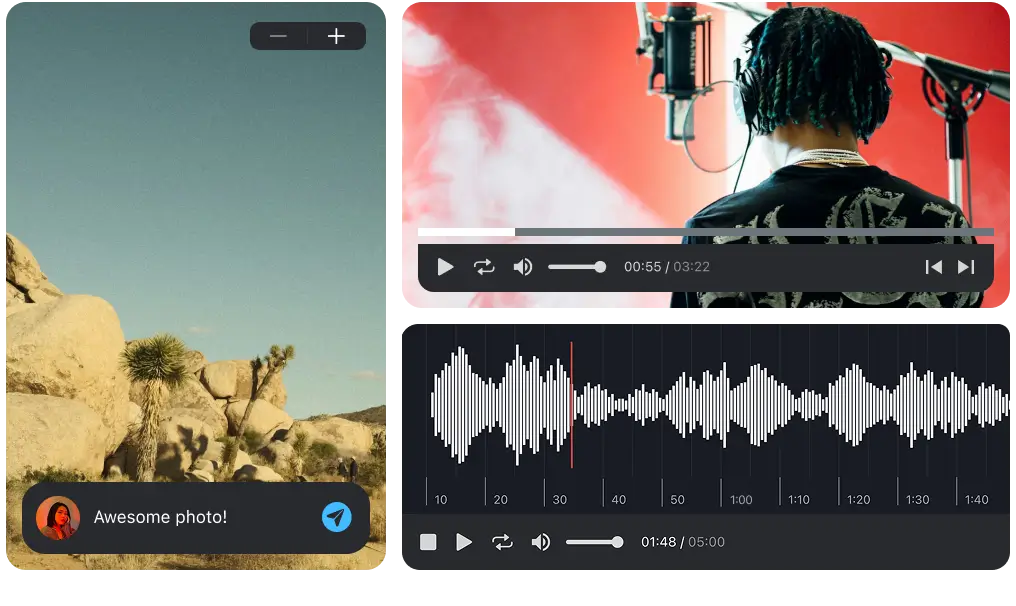The dream of remote music collaboration sounds amazing. Work with talent from anywhere in the world. The reality? A nightmare of messy Dropbox folders, confusing email chains, and endless "which-version-is-this?" headaches.
Remote collaboration should open creative doors, not create chaos. The problem isn't the concept - it's the tools. Most musicians try to use regular apps like email and file sharing for music work. These apps weren't made for music projects. This creates frustration and kills creativity.
Key takeaways:
- Vague feedback slows things down: When notes are unclear, you end up revising the same part over and over.
- Messy files kill momentum: Working on old versions or hunting for the latest track wastes creative energy.
- Scattered messages cause mistakes: Feedback spread across email, DMs, and apps leads to missed details.
- One central hub keeps everyone on track: Using a single platform makes files, feedback, and tasks easy to follow.
As a producer who has managed remote projects for years, I've lived through every one of these problems. My name is Luke Mounthill, and I've learned that the tools you use matter just as much as the talent you work with.
This guide will break down the biggest problems in remote music collaboration and show you how the right platform can solve them.
The 4 problems that kill remote music projects
Let me tell you about the four problems that destroy every remote music collaboration. If any of these sound familiar, you're not alone.
Problem #1: "The vague feedback nightmare"
Picture this: you spend six hours perfecting a mix. You send it to your collaborator for review. The response comes back via email: "Sounds good, but can you turn the vocals up a bit and maybe adjust that thing around the chorus?"
What vocals? Which part of the chorus? How much is "a bit"?
You're left playing detective, trying to guess what they mean. You make your best guess and send a revision. Then you get another vague response: "That's better, but now it's too much."
This cycle repeats until everyone is frustrated. The project timeline explodes. The problem isn't that your collaborator doesn't know what they want. It's that email and text messages are terrible tools for music feedback.
Problem #2: "The 'Final_mix_V7_UPDATED_really_final' folder"
File management becomes a horror movie when you're working remotely. Your project folder looks like a graveyard of old versions:
- Track_Demo.wav
- Track_Mix1.wav
- Track_Mix1_REVISED.wav
- Track_Mix2_with_guitar.wav
- Track_FINAL_USE_THIS_ONE.wav
But wait - someone just sent you "Track_NEWEST_VERSION.wav" through WeTransfer. Another collaborator uploaded "Track_Latest.wav" to Dropbox.
Which version is actually current? Is anyone working on old files? You spend more time managing versions than making music. This is where proper file sharing for musicians becomes crucial.
Problem #3: "The communication black hole"
Here's how your online music collaboration communications get scattered:
- Your vocalist sends creative feedback through Instagram DM
- Your mixing engineer asks technical questions via email
- Your manager provides project updates through text messages
- Business discussions happen on WhatsApp
- File sharing notifications come through Dropbox
The real danger isn't just the inconvenience - it's the missed information. That crucial deadline change gets buried in texts. The important creative direction gets forgotten in DMs.
Problem #4: "The 'Who's on what?' guessing game"
Three weeks into your remote project, nobody knows what's happening.
The mixer is waiting for final vocal takes. The vocalist thinks they're waiting for beat changes. The songwriter believes the track is ready for mastering.
Everyone is stuck, but nobody knows why.
This creates a domino effect. Small delays become major bottlenecks. Creative momentum dies while everyone figures out what they're supposed to be doing. Effective managing remote creative projects requires clear systems and communication.
Why remote music collaboration works better with a purpose-built hub
The good news? You don't have to use a dozen different apps anymore. A purpose-built platform like Pibox was designed by creatives, for creatives, to solve these exact problems. Here's how it transforms remote music collaboration from chaos into smooth creative flow.

Fixing confusing music feedback with clear comments
Instead of getting a confusing email saying "turn the vocals up a bit," Pibox lets your collaborator drop a pin directly on the audio waveform. They can point to the exact second where a change is needed.
They can leave a specific comment like: "This harmony at 2:47 is a little sharp - can you tune it down about 20 cents?"
The guesswork is gone. You know exactly what needs attention, where it happens in the track, and what the change should be.

Keeping track files organized in music projects
Pibox keeps every version of your track organized in one place. Instead of hunting through email attachments and shared folders, you can instantly flip between Version 1 and Version 2 to compare changes.
The system makes sure everyone works on the correct, most recent file.
Each version gets automatically time-stamped and labeled. You can trace how your track evolved and easily go back to earlier versions if needed.

Keeping music team messages in one place
All project-related conversations happen within your specific project in Pibox. Whether it's creative feedback, technical questions, business decisions, or deadline updates, everything stays in one searchable thread.
No more hunting through Instagram DMs to find that creative note. No more scrolling through email threads to locate technical details.
This approach makes sure everyone has access to the complete context. New team members can catch up quickly. Nobody misses important information because it was shared in the wrong app.

Solving “Who’s doing what” in music projects
Pibox lets you assign clear, color-coded statuses to every file and project milestone. Tracks can be marked as:
- "In Progress"
- "Needs Review"
- "Approved"
- Any custom status that fits your workflow
You can create checklists for each stage of the project, from initial composition to final mastering.
Everyone can see exactly who's responsible for the next step. They know what stage each element is in. They know what needs to happen before the project can move forward.

Pibox is the easier, faster way to collaborate in real-time, collect feedback, manage reviews, share, and finish your projects effortlessly.
A professional workflow in action: From demo to master
Here's how a typical remote music project flows when you use a purpose-built collaboration platform:
Week 1: Foundation.
The producer uploads the initial beat and song structure. The songwriter adds a rough vocal melody with time-stamped comments showing where they want harmony layers and ad-libs. Everyone can see the creative vision taking shape.
Week 2: Development.
The vocalist records their main takes and uploads them with notes about which sections sound best. The producer adds arrangement elements based on the vocal performance, leaving comments about timing and energy changes they made.
Week 3: Refinement.
The mixing engineer gets all the properly organized stems and provides mix revisions. Instead of vague feedback emails, collaborators leave specific comments directly on the waveform: "The snare needs more punch at 1:23" or "The vocal reverb is perfect in the verse but too wet in the chorus."
Week 4: Completion.
The final mix gets approved through the platform's review system, with everyone's sign-off clearly documented. The mastering engineer gets the approved final mix, delivers the master, and the project status updates to "Complete" with all files organized and accessible.
Throughout this entire process, everyone knows exactly where the project stands. They know who's responsible for the next step. They know what needs to happen to keep things moving forward.
The creative energy stays focused on making great music instead of managing logistics.
The final takeaway: Stop being an admin, start being an artist
The biggest benefit of a platform like Pibox isn't just the features. It's all the time and mental energy you save.
Your focus changes from juggling apps to working on your creative vision. Instead of remembering which app has what information, you can use that energy to make creative decisions that improve your music.
Remote music collaboration should expand your creative options, not create headaches. When you choose tools made for music projects, you get rid of the problems that kill creative flow.
Don't let bad tools limit your creative vision. The difference between a frustrating remote project and a successful one comes down to picking the right platform.
If you're tired of juggling email, Dropbox, and texts, explore how Pibox can simplify your next project.
Frequently asked questions about remote music collaboration
What is remote music collaboration?
Remote music collaboration is when musicians, producers, and engineers work together on projects without being in the same studio. They share files, leave feedback, and communicate online using online music collaboration tools.
How do musicians share files remotely?
Most musicians start with basic cloud services for file sharing for musicians. While email and Dropbox can work for simple projects, they often create version chaos.
Purpose-built platforms like Pibox make file sharing much easier by keeping all versions and feedback organized.
What are the best tools for online music collaboration?
Many artists use a mix of Dropbox, Google Drive, and messaging apps, but these weren't made for music work. Dedicated online music collaboration tools like Pibox combine everything in one place.
How do you manage remote creative projects effectively?
The key to managing remote creative projects is using one central platform instead of scattered apps. A good music project management tool lets you assign tasks, track file versions, and keep all communication organized.
Is remote collaboration good for musicians?
Yes - remote collaboration allows artists to work with talent from anywhere in the world. It also reduces costs since you don't need to rent studio space or coordinate travel.
Easier, faster way to collaborate in real-time, collect feedback, manage reviews, share, and finish your projects effortlessly.










